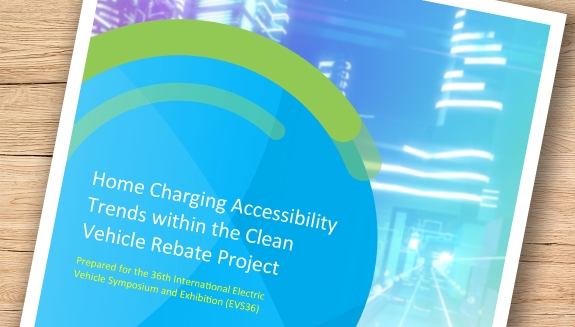Home Charging Accessibility Trends within the Clean Vehicle Rebate Project

This study asked participants in California’s Clean Vehicle Rebate Project (CVRP) about access to charging their electric vehicles (EVs) at home. The analysis by CSE's Francis Alvarez and Aria Gehrmann draws from surveys conducted during 2017-20, a time when the project rebated 43% of new EVs purchased or leased in the state. CSE research analyst Francis Alvarez reported on the data at the 36th Electric Vehicle Symposium and Exposition (EVS36).
CVRP recipients are primarily homeowners, with 86% of survey respondents reporting they can charge at home and nearly 14% without home-charging access.
Among those surveyed:
- 36% rely on a 120-volt outlet for home charging
- 25% use a 240-volt outlet
- 23% have a Level 2 charging station
This illustrates that for some applicants, the upfront costs of installing a charger may not outweigh the benefits of convenience and fuel price savings.
Barriers to Charging at Home
When asked why, those who don’t charge at home stated:
- 56% rent or have a homeowners association and are not authorized to make changes at their residence.
- 32% can charge for free or at a lower cost somewhere else.
- 21% said adding an outlet or charging station would be too expensive.
BEV owners are more reliant on quicker charging and have a greater demand for installing Level 2 or 240-volt chargers, while PHEV owners are more frequently rely solely on a 120-volt outlet.
Charging at Work
Over 40% of applicants have access to workplace charging, whether it’s free or at a cost.
- Standard Rebate: 45% had workplace charging; 29% did not.
- Increased Rebate: 32% had workplace charging; 37% did not.
See the EVS36 presentation slides.

